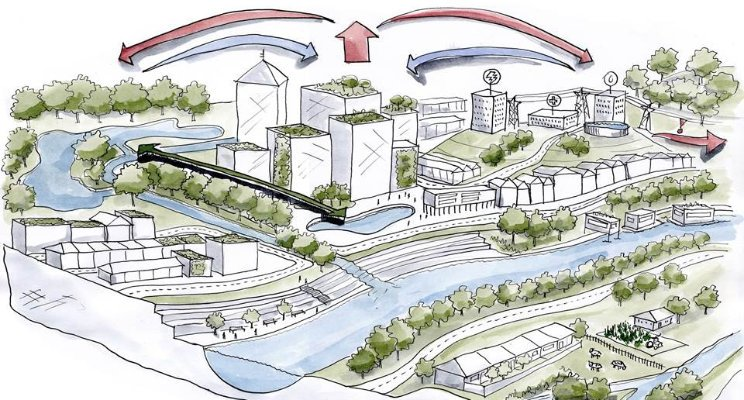International Beach Day: How can we help our beaches adapt to climate change?
The impact of climate change on our coasts, beaches and rivers across the UK has already been observed with flooding, erosion and weathering impacting the built environment in a variety of ways. With climate scientists predicting wetter winters, more intense weather extremes and rising sea levels, it is important to pay attention to our built environment’s resilience to these changes.
For this World Beach Day, we look at how the built environment is adapting to our changing climate, and what we can do to design more climate resilient buildings in the face of increased flooding risk.
Figure 1 - London flood risk map
London is prone to flooding from five sources – tidal, fluvial, surface, sewer, and groundwater flooding. While much of London is well defended, flood defences can only protect against fluvial and tidal flood risk. Surface water flooding is a big risk and happens when large volumes of rain fall cannot drain away fast enough – in London this is made worse by vast impermeable areas and low-capacity Victorian drainage systems. With climate projections predicting more frequent rainfall, we need to look at how London’s built environment can adapt to handle changing conditions.
Figure 2 - Illustration of possible flood resilient measures on city scale (Illustration by Natasha de Sena, Wageningen Environmental Research). Measures include green roofs, floodable urban areas, wetland restoration, blue green corridors, and urban forests.
So, what can we do to increase the resilience of our built environment to flooding? Green roofs offer a great solution; shown to provide cooling, drainage, enhance biodiversity, increase accessibility and aesthetics of the building, and offer a place to grow food and herbs.
Figure 3 – Benefits of a green roof and rainwater harvesting system.
Green roofs are a sustainable drainage technique that increase the permeability of a surface which slows surface water run-off, reducing the risk of flash flooding. Green roofs have been found to retain up to 75% of rainwater, and gradually release it back into the atmosphere while retaining pollutants in the soil. With roofs representing up to 32% of the horizontal surface in cities, their utilisation as storm water management proves an exciting opportunity to increase resilience to climatic changes.
As well as improving the resilience of our urban built environment to flooding, the changes we make in cities will affect the whole watercourse from the rivers, to the seas. Viewing these issues from a systems perspective allows us to better integrate nature-based solutions into our cities thereby increasing their effectiveness.
These approaches to flood prevention can play a role in protecting beaches from the impacts of climate change, by more effectively managing the flow of water to indirectly reduce pressure on our beaches. By combining natural and engineered solutions, these strategies can reduce the risk of floods and preserve beaches, which threatened by rising sea levels, stronger storms, and changing weather patterns.
By Beth Adams
For more information, you can explore the following:

























Comments